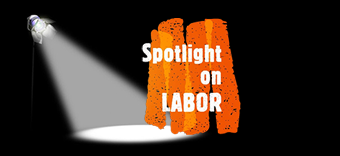HEALTH & SAFETY RE-IMERGE AS BIG JOB ISSUES
In 2015, Carlos Moncayo, an Ecuadorian immigrant construction worker, was crushed to death on his job of helping to build a rooftop restaurant in New York City. His death made little news because on-the-job deaths, despite rules promulgated by the Occupational Safety and Health Administration, are a common occurrence in the country.
According to the AFL-CIO, in 2020 4,764 workers were killed on the job, with an average of 340 dying each day due to employer neglect of hazardous working conditions. 120,000 died from occupational related diseases and 705 lost their lives to workplace violence.
The issue has risen again in the wake of revelations of the rising number of injuries suffered by workers, many of them illegal immigrants, as employers flout the rules and OSHA, whose funding have been repeatedly cut by Congress, lacks the resources to enforce those rules.
And a new element in the mix is the recent upsurge in the illegal employment of children in unsafe or unhealthy jobs like work in meatpacking plants and operating dangerous machinery. As previously reported on this page and in the NY Times (2/25), children as young as 12 are now working at dangerous jobs around the country, some late at night at machinery like fast-moving pulleys and gears that have torn off fingers and ripped open a woman’s scalp. The practice of employing child labor today is being aided and abetted in a number of states, like Arkansas and Iowa, which have passed laws lifting many restrictions on the employment of children.
One illustration of the recent attention to job-related illness and death is the upsurge of a new version of black lung disease among coal miners in Kentucky, Virginia and West Virginia. According recent data from OSHA, in Kentucky and West Virginia 1 out of every 8 miners, many only in their forties and fifties “are struggling to breathe.” It’s a sharp increase from the 1 out of 30 just a decade ago. But the dust that they’re breathing comes not primarily from coal. It’s from silica dust which is 20 times more toxic than coal. The dust is caused by having to drill through layers of silica-laden rock as the old coal veins yield less and miners have to drill deeper and deeper to access the coal.
The dust clings to their clothes and parts of their bodies and eventually gets into their lungs, causing chronic pulmonary diseases like bronchitis and lung cancer, and eventually killing them. And as mentioned above, with OSHA’s enforcement ability severely hindered by a lack of resources, mine operators have been flouting health and safety regulations for decades.
What is clearly needed is pressure to push for the enactment of strictly enforced laws for the protection of workers’ lives. It’s a factor in the renewed organizing drives for unions that can negotiate the enforcement of these rules by management along with the demand for higher wages and better working conditions. For what is more basic than the very lives of people who do the work.
NY Times print edition, 2/25. Work Bites, 5/1, In These Times, May/23


